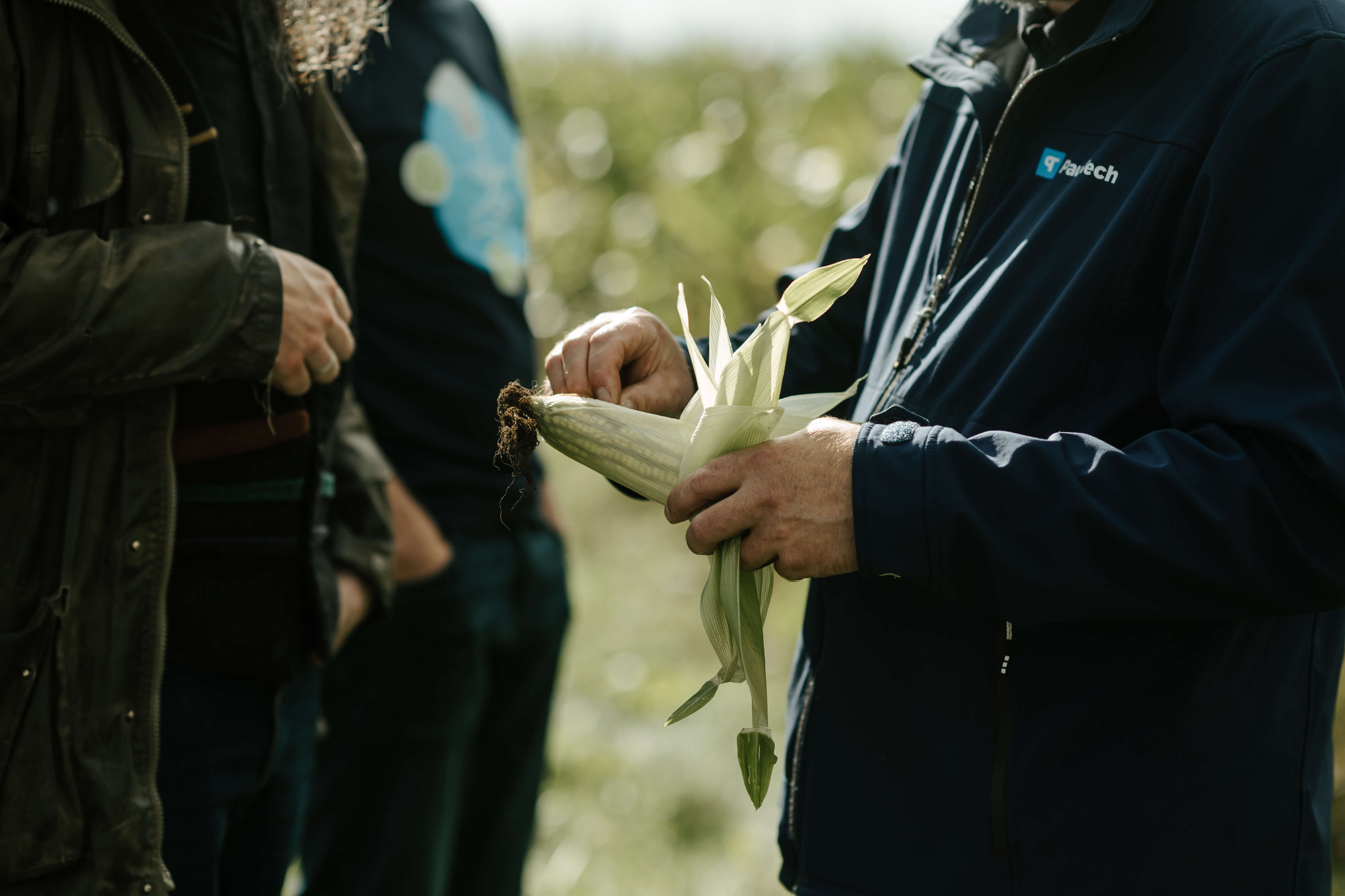
From potted plants to full-scale farms, soil nutrition has always played a pivotal role in growing success over disappointment. Knowing what’s in your soil and what needs to be added brings peace of mind to your journey, from seed to harvest.
While hydration, weather and a myriad of other factors cannot be ignored, today we’ll focus on understanding soil nutrition, how it affects your plants, and how to access your soil’s nutrient data on a daily basis with Paul-Tech.
If you’re ready to nerd out on things like nitrogen and soil aggregation, then read on before the season changes. And if you’re looking for the #1 way to improve your soil’s health while saving time and money along the way, we’ll get you started for free by the end of this read.
What is soil nutrition?
Starting with the basics, soil nutrition is the availability and balance (hopefully) of various nutrients in your field’s soil. While nitrogen, potassium and phosphorus take centre stage, many others are playing their part in giving your plants life.
A soil’s nutrient value before harvest is vital information but continues to change daily. It’s estimated that around 50% of nutrients are removed following a harvest, but the properly timed introduction of nutrition before harvest is equally important as ensuring you’re ready for next year.
What affects soil nutrition?
Soil’s positive makeup is a lot like our own dietary requirements, a balanced variation of matter brings the best results long-term. The University of Missouri’s soil testing and plant diagnostic lab’s research shows the ideal array of matter as 45% mineral, 25% air, 25% water, and 5% organic matter. The more compact soil is, the less air and water it can hold inside pores, restricting root growth, storage and delivery.
Soil structure
A soil’s structure affects what it holds and provides to plants. Calcium and Magnesium, as well as organic matter, serve to aggregate soil and give it the body it needs for proper growth potential. Your soil’s makeup is the ride or die for everything from water delivery for plants, to positive root growth, and beyond — practices like no-till, cover cropping and proper fertilisation can make dramatically positive differences in any soil’s texture.
Soil moisture
Water is life (when it’s not drowning it out). The symbiotic relationship it shares with air between your soil’s porous design is vital in maintaining these healthy biomes for organic matter, nutrients and microorganisms to thrive.
Proper soil nutrition relies on the right aspect of water to earth, as well your plant’s ability to intake more hydration. Excess water can muddy the other benefits (pun intended) your plants should be receiving, while too little will result in poor soil nutrition, arid land and burned crops.
Bio and chemical fertiliser application
Fertilisers are uniformly used to enhance the growth of plants but can play other roles in agriculture, both negatively and positively. The difference depends entirely on what is used, when and how often.
Bio-fertilisers are organic applications made of plant, animal and vegetable waste. These renewable sources improve soil texture and slowly stimulate plant growth. Organic fertilisers support the natural growth of nitrogen-fixing bacteria, do not contain sodium salts and can often be applied without the need for special equipment.
Chemical fertilisers work fast and evenly, causing plants to grow in a shorter timespan and without as frequent a need for re-application. However, it is known that chemical fertilisers can cause soil acidification, and do little for soil nutrition in the long run — a quick-grow solution for plants rather than the big picture.
Introducing fertilisers of either type will promote plant growth and healthy soil if done correctly. Knowing your soil’s nutrient data is key to understanding this.
How Paul-Tech soil stations provide your nutrient data daily
The common past-time for farmers has been the use of manual soil tests. Mankind and science began testing soil nutrient levels in the mid-1800s, and introduced fertiliser recommendations based on this information as late as the early 20th century (yay, science). Come into more recent years, the addition of weather and satellite stations broadened the modern farmer’s ability to harvest data more readily.
Paul-Tech soil stations are the next step, going beyond weather and satellite stations by adding two proprietary soil probes that analyse your field’s soil nutrient levels and offer real-time data-backed fertilisation recommendations.
How do Paul-Tech soil stations work?
A free demo (including on-site demonstrations) is available at any time!
Our team will analyse your individual farm’s needs to optimise the placement and frequency of our solar-powered soil stations, as well as guide you through using the data, mapping and suggestions they provide.
You’ll receive daily information to help you better understand how your field’s soil nutrients, moisture content, chemical use (herbicide, pesticide, fungicide, fertiliser) and temperature are affecting field and plant health, in addition to accurate weather and humidity reports.
Daily reports, data-backed suggestions and historic information saved securely to our cloud mean you’re never in the dark and making crucial decisions when they matter most.